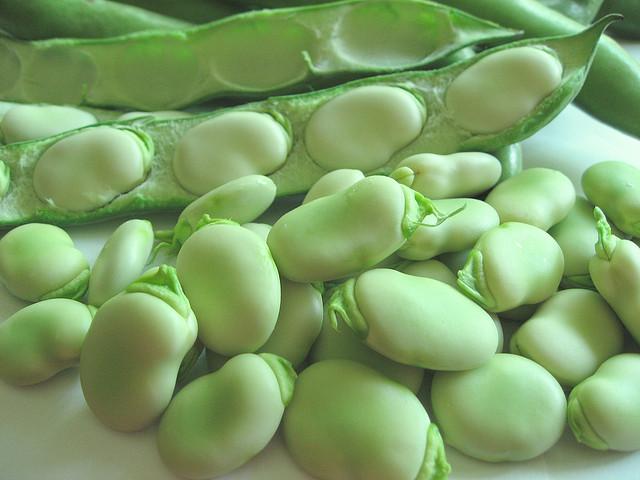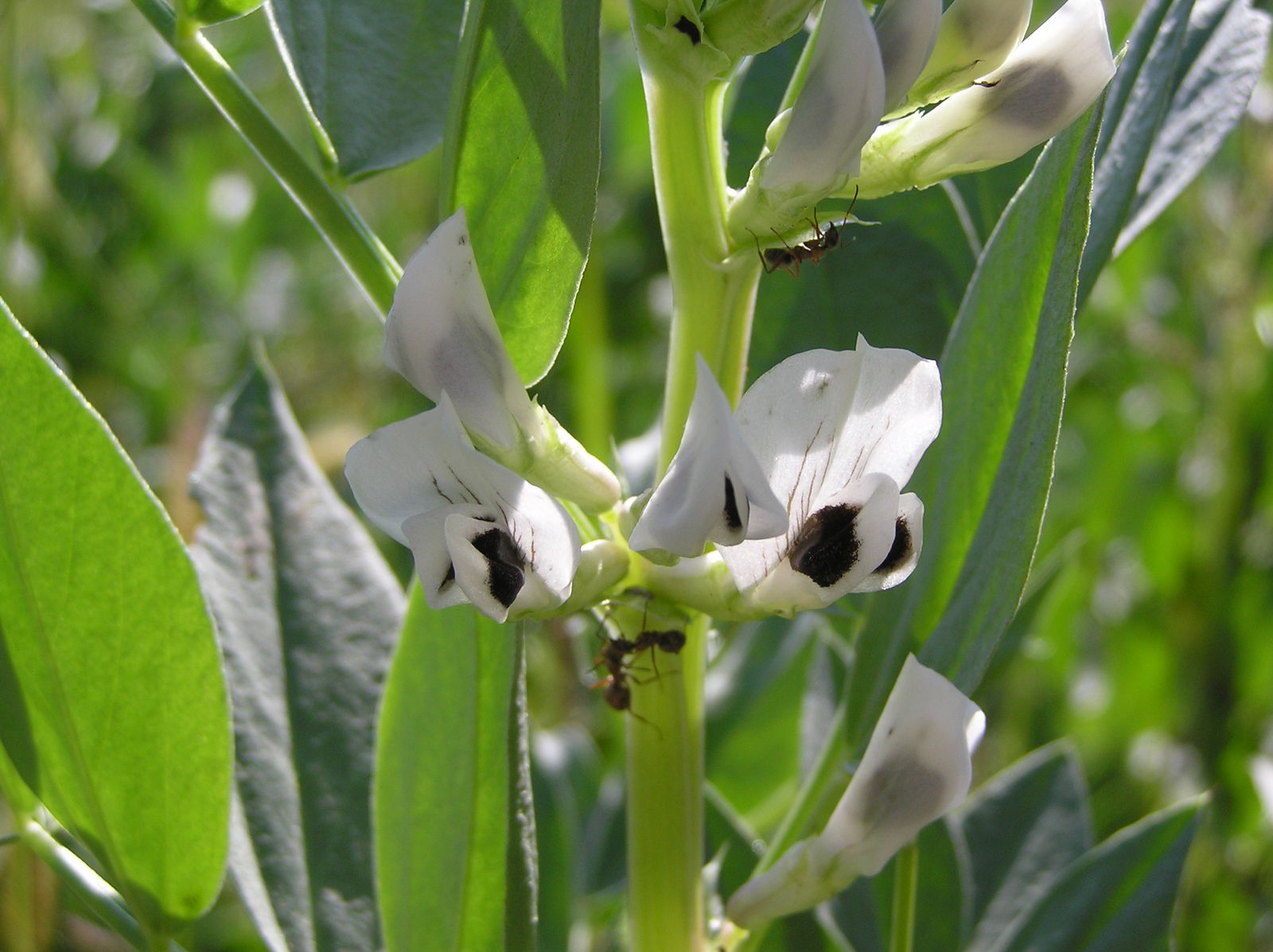Broad Bean
vicia faba
Also known as: ["Fava Bean","Faba Bean","Field Bean","Horse Bean"]
Overview
A leguminous plant cultivated for its edible seeds, known for its large, flat pods containing several seeds.
Benefits & Perks
["edible fruits","disease resistant","wildlife attractant (bees, butterflies, birds)","drought tolerant","cold hardy"]
Botanical Classification
| Phylum: | Magnoliophyta |
| Class: | Magnoliopsida |
| Order: | Fabales |
| Family: | Fabaceae |
| Genus: | Vicia |
| Botanical Name: | Vicia faba |
Plant Characteristics
Basic Information
- Category: Fruits
- Suitable Location: outdoor garden bed in temperate climates
- Suitable For:
- Is Weed: No
- Allergenicity: low
Environmental Needs
- Climate: {"temperatureRange":"5–25°C"}
- Hardiness: {"zones":"4–8"}
- Misting: rarely required, only if ambient humidity is very low
- Drainage: Well-draining to moderately draining
- Soil Type: Loamy, well-draining soil with added organic matter
Maintenance Level
- Maintenance Level: low
- Toughness Level: high
- Pruning Frequency: Not applicable
- Pruning Intensity: Not applicable
Care Details
Ideal Sunlight Coverage:
Full sun (6–8 hours of direct sunlight per day); adjust to partial shade in extreme heat to prevent scorching.
Sunlight Tolerance Tips:
Acclimate plants gradually to intense sunlight; provide shade during peak afternoon hours in hot climates; ensure adequate ventilation to prevent heat stress.
Care Requirements
Care Difficulty
easyeasy
Sunlight
full sun to partial shade
Rotate plants for even light exposure; use shade cloth in intense sun; avoid placing near reflective surfaces that intensify light.
Watering
every 7–10 days during active growth, less frequently in dormant periods
Water thoroughly but infrequently; ensure good drainage; avoid wetting foliage to prevent fungal diseases.
Soil
well-drained, fertile loam with moderate organic matter
pH: 6.0–7.5 (slightly acidic to neutral)
Test soil pH before planting; amend with lime if too acidic; ensure soil is loose and crumbly for root growth.
Temperature
Prefers cool to moderate temperatures (60–75°F or 15–24°C); tolerates cooler nights but avoids frost.
Use frost protection in early/late seasons; water early to avoid heat stress; monitor temperature fluctuations.
Fertilizing
every 4–6 weeks during growing season with balanced fertilizer
Apply fertilizer before planting; water after fertilizing to activate nutrients; avoid high-nitrogen fertilizers late in the season.
Propagation
Methods
Seeds
Step-by-Step Propagation Guide
- Sow seeds directly into the garden after last frost.
- Space seeds 4–6 inches apart.
- Water gently after planting.
Best Time: Spring, after the last frost date
Environment
Full sun, well-drained soil, moderate moisture
Medium
Well-draining soil with compost or aged manure
Hormone
Not required
Timeline
Germination in 7–14 days; plants mature in 60–100 days
Tools Needed
Garden trowel, watering can, seed labels
Quick Tips
Sow seeds 1–2 inches deep; thin seedlings if overcrowded; keep soil consistently moist during germination.
Pruning & Repotting
Pruning Guide
Method
Not applicable
Pruning Plan
Vicia faba is a legume grown for its pods and does not require pruning. Focus on removing weeds and supporting tall plants if needed.
Tools
Not applicable
Checklist
Not applicable
Repotting Guide
Best Season
Not applicable
Pot Size
Not applicable
Method
Not applicable
Suggestions
Not applicable (grown in garden beds or large containers)
Checklist
Not applicable
Advanced Care Tips
Watering Mastery
Watering Checklist
Check soil moisture before watering; water at the base; ensure proper drainage; avoid overhead watering.
How to Apply Water Properly
Water directly at the base of the plant, ensuring moisture reaches the root zone without saturating the soil. Water early in the morning to minimize evaporation and allow foliage to dry before nightfall.
Watering Schedule Tips
Water deeply once the top inch of soil is dry; reduce frequency in winter to prevent root rot.
Soil Improvement
Add compost or well-rotted manure to improve fertility and structure; ensure good drainage by amending with sand or perlite if needed.
Temperature Stress Management
Signs of Temperature Issues
Wilting, yellowing leaves, stunted growth, or flower/seed pod drop due to extreme heat or cold.
Cold Stress
Low temperatures slow growth and can damage developing pods; frost can kill the plant.
Solution: Plant in a sheltered location; use row covers or cloches in early spring or late fall; avoid planting in areas prone to frost pockets.
Hot Stress
Excessive heat can cause flowers to drop, reduce pod set, and lead to leaf scorch.
Solution: Provide afternoon shade; increase watering frequency; mulch to retain soil moisture; plant in well-draining soil to prevent heat stress.
Fertilizing Guide
Fertilizing Checklist
Use balanced fertilizer; apply at planting; side-dress mid-season if needed; avoid over-fertilizing.
Fertilizing Method
Use a balanced, slow-release fertilizer at planting time; side-dress with compost or a nitrogen-rich fertilizer mid-season if needed; avoid over-fertilizing to prevent excessive foliage growth at the expense of pods.
Common Problems & Solutions
Toxicity Warning
Cats
Non-toxicVicia faba is generally considered non-toxic to cats when consumed in moderation and properly cooked.
⚡ Toxic If:
not applicable
Dogs
Non-toxicVicia faba is generally considered non-toxic to dogs when consumed in moderation and properly cooked.
⚡ Toxic If:
not applicable
Humans
Slightly ToxicVicia faba, commonly known as broad bean, contains vicine and convicine, which can cause hemolytic anemia in individuals with a glucose-6-phosphate dehydrogenase (G6PD) deficiency. The toxicity is primarily associated with raw or undercooked seeds.
⚠️ Symptoms:
🌿 Toxic Parts:
⚡ Toxic If:
if eaten raw or improperly cooked
Frequently Asked Questions
Q: Are broad beans toxic to humans?
A: Yes, they can be mildly toxic if consumed in large quantities or improperly prepared, particularly for individuals with G6PD deficiency.
Q: How do I grow broad beans?
A: Plant seeds directly in well-drained soil in early spring, providing support for tall varieties and regular watering.
Q: What are the uses of broad beans?
A: They are primarily used as a food source, either fresh or dried, and can also be used as a cover crop to improve soil nitrogen levels.
Quick Reference
| Family: | Fabaceae |
| Care: | easy |
| Light: | full sun to partial shade |
| Water: | every 7–10 days during activ |
Get Expert Care Tips
Download the Plantious app for personalized care reminders and plant identification!
Google Play App Store








